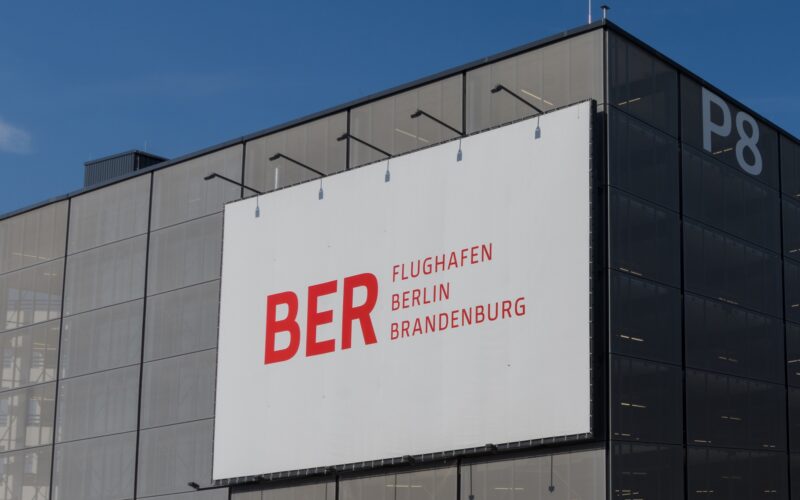Berlin Brandenburg Airport (BER) may have faced a rough start, with both the industry and the public having a negative view of the airport, but the situation has been changing for the better, said Thomas Hoff Andersson, the chief operating officer (COO) of BER, during the World Aviation Festival 2023.
“In the past, while attending different type of events, venues, or external meetings, there always used to be a negative comment or joke about the airport,” Andersson admitted to AeroTime.
However, the COO added that step by step, this has changed to “positive greetings”.
One of the main things people now highlight is the BER Runway, a service that allows passengers to book a time slot to go through security and avoid long queues.
“So now, there is a positive link between the airport and the passenger experience,” Andersson stated. “We continue adding new services for our guests and we realize that it is not a sprint, it is a marathon for us to change the reputation of the airport because of the start [it had].”
Andersson, who has held the position of COO at the airport since May 2022, said that BER has changed a lot since he came on board. In part, that change was forced upon BER, because it opened at the height of the COVID-19 pandemic in October 2020.
“So, when I joined it was probably two or three months into what looked more like normal operations, with most of the restrictions and limitations being removed,” he noted. “The first step was to become a ‘normal’ airport in terms of being able to operate the new facilities to process an increasing number of passengers after COVID.”
Challenges of a new airport
One of the challenges that BER faced was passengers arriving at a completely new site, requiring them to figure out ways to navigate the airport. “But it was a fun challenge,” he said.
The airport is well connected to Berlin via rail, bus, and taxi. However, some travelers may have become confused about where to go next because all passengers arriving by rail arrive at Terminal 1, regardless of whether they are flying from Terminal 1 or Terminal 2.
“We still have work to do to make [the passenger journey] more intuitive with more clear signage,” Andersson admitted. “Making sure the passengers could actually navigate sounds simple but that is something we had to address.”
With the introduction of BER Runway, up to 25% of passengers now book a time slot in advance, the COO explained.
“That completely eliminates stress and uncertainty for these passengers,” Andersson said. “At the moment, we are offering up to 8000 daily [timed security] slots for passengers to pick up.”
Innovative spirit at BER
Andersson said he believes that BER is developing something that few other airports have, namely a fully vertically and horizontally integrated biometric solution for passengers.
“When I say vertical, I mean that passengers can check-in, go through security, and board the aircraft with your face acting as your boarding pass,” Andersson clarified. “When I say horizontal, I mean that we take the full security gate line and make it available for all airlines and passengers to use the biometric service.”
The airport is also the first in Germany to “introduce the full-scale implementation of [Artificial Intelligence (AI)], managing the apron operations with a partnership with Assaia”.
BER announced the partnership on September 27, 2023.
Andersson also highlighted the adoption of the Sunflower lanyard, an internationally recognized symbol for hidden disabilities, at the airport, which allows staff and passengers to better support people with hidden disabilities traveling through BER.
“That is what you are going to see from BER, because of our history, we have to create a new narrative,” the COO commented, adding that in the coming years, the airport plans to introduce more innovations.
But BER will not be able to compete with Frankfurt Airport (FRA) and Munich Airport (MUC), at least “in the foreseeable future,” Andersson said.
“We are an atypical capital city airport because we do not have a legacy home base carrier,” he stated.
However, the airport has a healthy mix of airlines with different business models in its portfolio. The COO mentioned that of the major airlines operating from the airport, Lufthansa Group has approximately 25% of the market share, with Ryanair and easyJet holding close to 20% each.
“That split enables us to do things which airports with home-based carriers cannot,” he added.
And Andersson sees a lot of exciting opportunities for the airport in the future.
“We have every opportunity to take this journey, going from an airport with a tough start to being an airport, which is extremely ambitious when it comes to digital solutions,” the COO said.
But he also noted that BER is “very ambitious” to deliver the highest-quality service possible to its passengers and airlines.
That includes helping carriers to become more sustainable, with Andersson mentioning that the airport is “Sustainable Aviation Fuel [SAF]-ready”.

